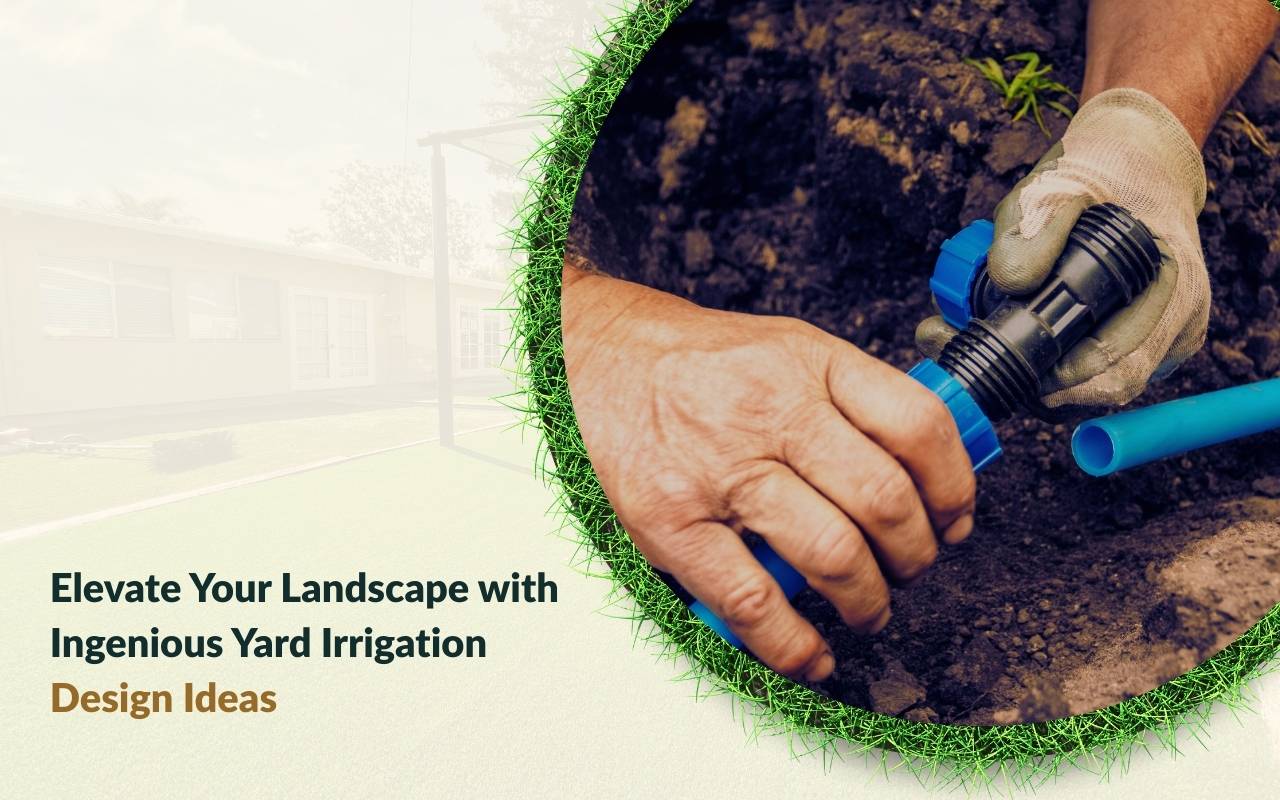
In every vibrant garden, water and life create harmony. Yard irrigation design ensures efficient watering and healthier landscapes.
With creative irrigation strategies, your yard becomes lush and sustainable. Moreover, efficient watering keeps plants thriving, even during hot summer days.
Explore how Landscaping services in Gilroy, Landscaping services in Salinas, and Landscaping services in Morgan Hill can integrate irrigation design into your outdoor project.
Designing a Customized Irrigation Plan
A successful yard irrigation design requires considering soil, sunlight, plants, and slope. Therefore, mapping zones is essential.
Group plants with similar watering needs. This process, called hydrozoning, prevents overwatering and ensures balance across your yard.
Also, check water pressure and flow rate. Proper regulation protects drip emitters and micro-sprays, extending system efficiency.
Finally, add seasonal flexibility. Smart controllers adjust run times according to climate changes, keeping plants strong throughout the year.
Choosing the Right Irrigation System for Your Yard
- Sprinklers provide broad coverage, especially for lawns.
- Drip irrigation delivers water directly to roots, reducing waste.
- Soaker hoses offer affordable solutions for garden rows.
Your yard irrigation design must also consider climate conditions and water restrictions. Smart planning guarantees sustainability and longevity.
Additionally, ease of installation and maintenance matters. Simple systems suit DIY projects, while complex landscapes need professional installation.
Smart Irrigation Technology: Enhancing Efficiency
Smart controllers adjust watering automatically using sensors and weather data. Consequently, your yard irrigation design becomes more precise.
Mobile apps allow real-time control. While traveling, you can easily pause or adjust irrigation schedules with a single tap.
Moreover, integrating sensors ensures only necessary watering occurs. This saves resources and supports consistent plant health all year long.
Drip Irrigation: Precision Watering for Optimal Growth
Drip systems deliver water directly to roots, minimizing waste. Hence, this method prevents evaporation and surface runoff effectively.
Installing regulators, filters, and correct emitters ensures long-term success. Furthermore, regular maintenance keeps the system functioning properly.
By using drip irrigation, your yard irrigation design gains efficiency and promotes stronger, healthier plant growth.
Incorporating Rainwater Harvesting in Your Landscape
- Rain barrels collect water from rooftops.
- Cisterns offer larger storage for irrigation.
- Smart valves prioritize rainwater before municipal supply.
Rainwater harvesting reduces utility demand and supports eco-friendly landscaping. Additionally, integrating it strengthens any sustainable yard irrigation design.
Seasonal Adjustments and Maintenance Tips
Adjust irrigation schedules according to seasons. Hot summers require more water, while cooler months need reduced run times.
Regular system checks prevent leaks and damage. Additionally, flushing lines clears debris and ensures efficiency year-round.
Monitoring plant health helps refine watering strategies. This ongoing process improves your yard irrigation design continuously.
Xeriscaping: Sustainable Irrigation Practices
Xeriscaping combines drought-tolerant plants with efficient watering methods. Consequently, water waste decreases and landscapes remain vibrant.
Grouping plants by water needs simplifies irrigation. Moreover, mulch and permeable materials also help maintain soil moisture efficiently.
Integrating xeriscaping principles enhances your yard irrigation design while promoting eco-friendly landscaping practices.
Creative Water Features: Functional and Aesthetic Benefits
Water features improve beauty while supporting irrigation. Ponds or fountains can function as water reservoirs, reducing external supply use.
Solar pumps provide eco-friendly energy for circulation. Additionally, recirculating systems maximize efficiency within yard irrigation design.
Besides irrigation, these features create relaxing outdoor spaces. The sounds of water add tranquility and charm to landscapes.
Enhancing Curb Appeal with Irrigation Design Elements
- Hide drip tubing beneath mulch for a cleaner look.
- Use decorative valve boxes matching your garden style.
- Install lighting to highlight irrigation features at night.
Blending irrigation elements with design details boosts curb appeal. A practical yard irrigation design can also enhance aesthetics.
FAQs About Yard Irrigation Design
1. What is the main benefit of yard irrigation design?
It ensures efficient water use, healthier plants, and sustainable landscaping practices.
2. How often should irrigation systems be maintained?
Check systems before each season and perform routine inspections monthly for best performance.
3. Is smart irrigation worth the investment?
Yes. Smart systems save water, reduce costs, and provide long-term sustainability.
4. Can rainwater harvesting work with irrigation?
Yes. Collected rainwater can power drip lines, soaker hoses, or sprinklers efficiently.
5. Which system is best for flowerbeds?
Drip irrigation is ideal, as it delivers water directly to plant roots.
Bringing Your Landscape Vision to Life
A well-planned yard irrigation design supports plant health and boosts sustainability. Adding smart tools and eco-friendly methods ensures efficiency.
Ready to upgrade your yard? Explore Artificial turf installation in Hollister or request tailored solutions through our Contact Jardinland Landscaping page. Let’s bring your landscape vision to life.
